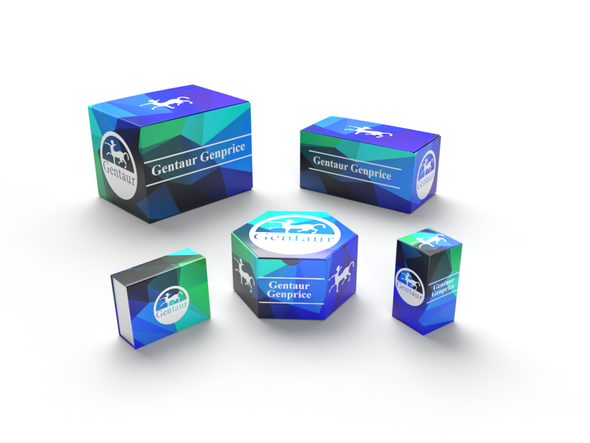740
Human Netrin-1 (NTN1) ELISA Kit | AE58179HU
- SKU:
- 740-AE58179HU
- Availability:
- Usually ships in 5 working days
Description
Human Netrin-1 (NTN1) ELISA Kit | AE58179HU | Gentaur UK, US & Europe Distribution
Species Reactivity: Human (Homo sapiens)
Abbreviation: NTN1
Alternative Name: NTN1L; Netrin-1|netrin 1; mouse; homolog of
Application: ELISA
Range: 31.25-2000 pg/mL
Sensitivity: 11.3 pg/mL
Intra-Assay: ≤6.3%
Inter-Assay: ≤10.8%
Recovery: 0, 89
Sample Type: Serum, Plasma, Other biological fluids
Detection Method: Sandwich
Analysis Method : Quantitive
Test Principale: This assay employs a two-site sandwich ELISA to quantitate NTN1 in samples. An antibody specific for NTN1 has been pre-coated onto a microplate. Standards and samples are pipetted into the wells and anyNTN1 present is bound by the immobilized antibody. After removing any unbound substances, a biotin-conjugated antibody specific for NTN1 is added to the wells. After washing, Streptavidin conjugated Horseradish Peroxidase (HRP) is added to the wells. Following a wash to remove any unbound avidin-enzyme reagent, a substrate solution is added to the wells and color develops in proportion to the amount of NTN1 bound in the initial step. The color development is stopped and the intensity of the color is measured.
Product Overview: Netrin is a class of protein involved in axon guidance, genetically conserved across C. elegans, Drosophila, frogs, and mice. The genes that encode the first discovered netrins was found to be 50% identical to the gene the unc-6 protein that plays a role in the development of neural systems in nematodes. Netrin-1 is a growth cue which is expressed in neuroepithelial cells in the optic nerve head (ONH) . Although it is not required for retinal ganglion cell (RGC) axons to reach the ONH, it does favor their entrance by means of chemoattraction. However, growth of Xenopus RGC's on laminin substrate change the Netrin-1 response to chemorepulsion, which causes the RGC axon to be pushed into the optic nerve head.
Stability: The stability of ELISA kit is determined by the loss rate of activity. The loss rate of this kit is less than 5% within the expiration date under appropriate storage condition. The loss rate was determined by accelerated thermal degradation test. Keep the kit at 37°C for 4 and 7 days, and compare O.D.values of the kit kept at 37°C with that of at recommended temperature. (referring from China Biological Products Standard, which was calculated by the Arrhenius equation. For ELISA kit, 4 days storage at 37°C can be considered as 6 months at 2 - 8°C, which means 7 days at 37°C equaling 12 months at 2 - 8°C) .






